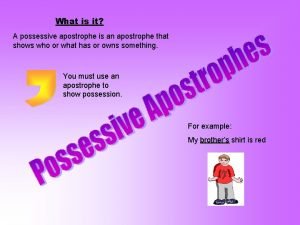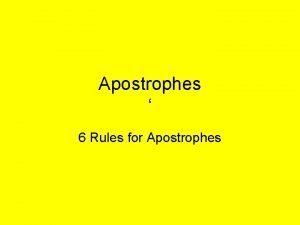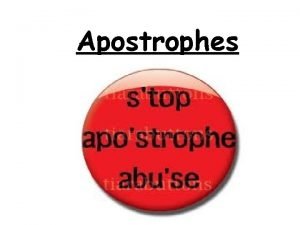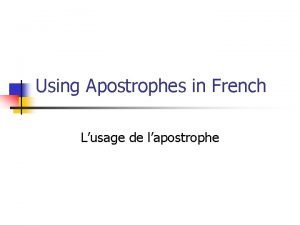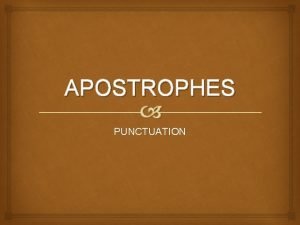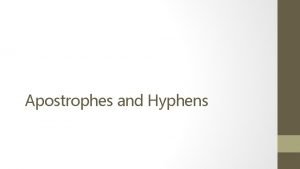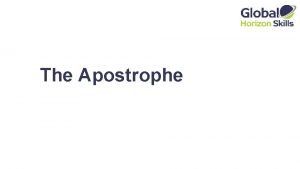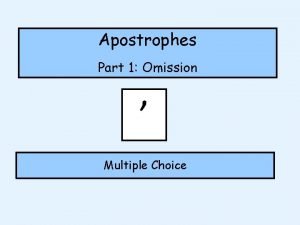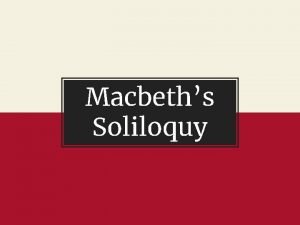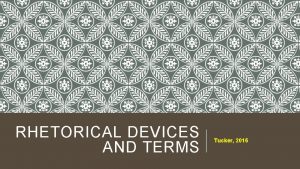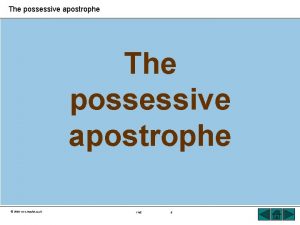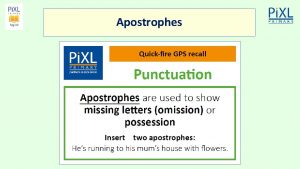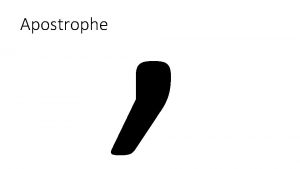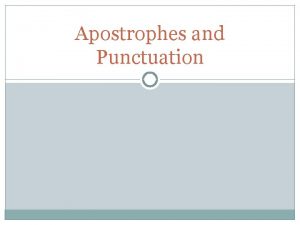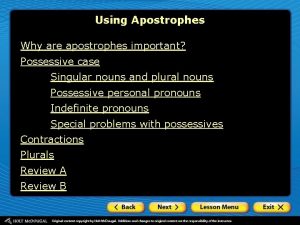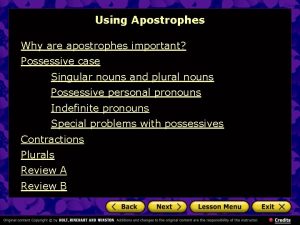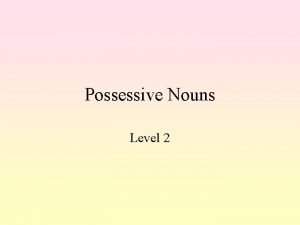Apostrophes Possessive Apostrophes An apostrophe is a small












- Slides: 12

Apostrophes

Possessive Apostrophes • An apostrophe is a small punctuation mark ( ’ ) placed after a noun to show that the noun owns something.

The apostrophe will always be placed either before or after an s at the end of the noun owner.

To sum up: 1. For a singular possessive: ‘s 2. For a plural possessive that ends in s: ‘ 3. For a plural possessive that does not end in s: ‘s 4. The apostrophe will always go after the last letter of the last word when your rephrase it into an “of the” phrase. *

Just because a word ends in s does not mean it needs an apostrophe! Possessive nouns need apostrophes. This picture is incorrect:

If a noun is possessive, it can be rephrased into an "of the. . . “ or “belonging to” phrase. *The apostrophe will always go after the last letter of the last word when you rephrase it. * Examples: ▪boy's hat = the hat of the boy ▪two boys’ hats = the hats belonging to the two boys

If the noun owner is singular (one person or thing), add an apostrophe and an s. Examples: • Charlie’s dog (dog belonging to Charlie) • My mother’s children (children belonging to my mother) • The teacher’s classes (classes of the teacher)

If the noun owner is plural (more than one person or thing) and already ends in s, just add an apostrophe. Examples: ▪the students' projects (the projects belonging to the students) ▪the Smiths' house (the house belonging to the Smiths)

Sometimes plural nouns do not end in s. If this is the case, you must add ‘s if it’s possessive. Examples: children’s toys men’s bathroom

When the names of two or more persons are used to show joint ownership of the same thing, only the name of the last person mentioned is given the possessive form. Grandma and Grandpa’s house If the names of two or more persons are used to show separate ownership, each name is given the possessive form. Mrs. Rojeski’s and Mrs. Gerardy’s classrooms

Apostrophes and Contractions Apostrophes also stand in for letters or numbers that have been taken out of a word or phrase Examples: Do not = don’t It is = it’s 2013 = ‘ 13

An apostrophe is used to show the plurals of letters, reference to words, numbers, and symbols used as words. Examples) Don’t confuse 7’s and 8’s. There are two t’s in my name.
 Possessive apostrophe
Possessive apostrophe Apostrophe rules
Apostrophe rules Apostrophe after s or before
Apostrophe after s or before French words with apostrophes
French words with apostrophes Apostrophe functions
Apostrophe functions Show possession
Show possession Apostrophe before s or after s
Apostrophe before s or after s Apostrophes for omission
Apostrophes for omission Grammar bytes commas
Grammar bytes commas Is this a dagger which i see before me literary devices
Is this a dagger which i see before me literary devices Slant examples
Slant examples Teachit.co.uk
Teachit.co.uk Showing possession
Showing possession
